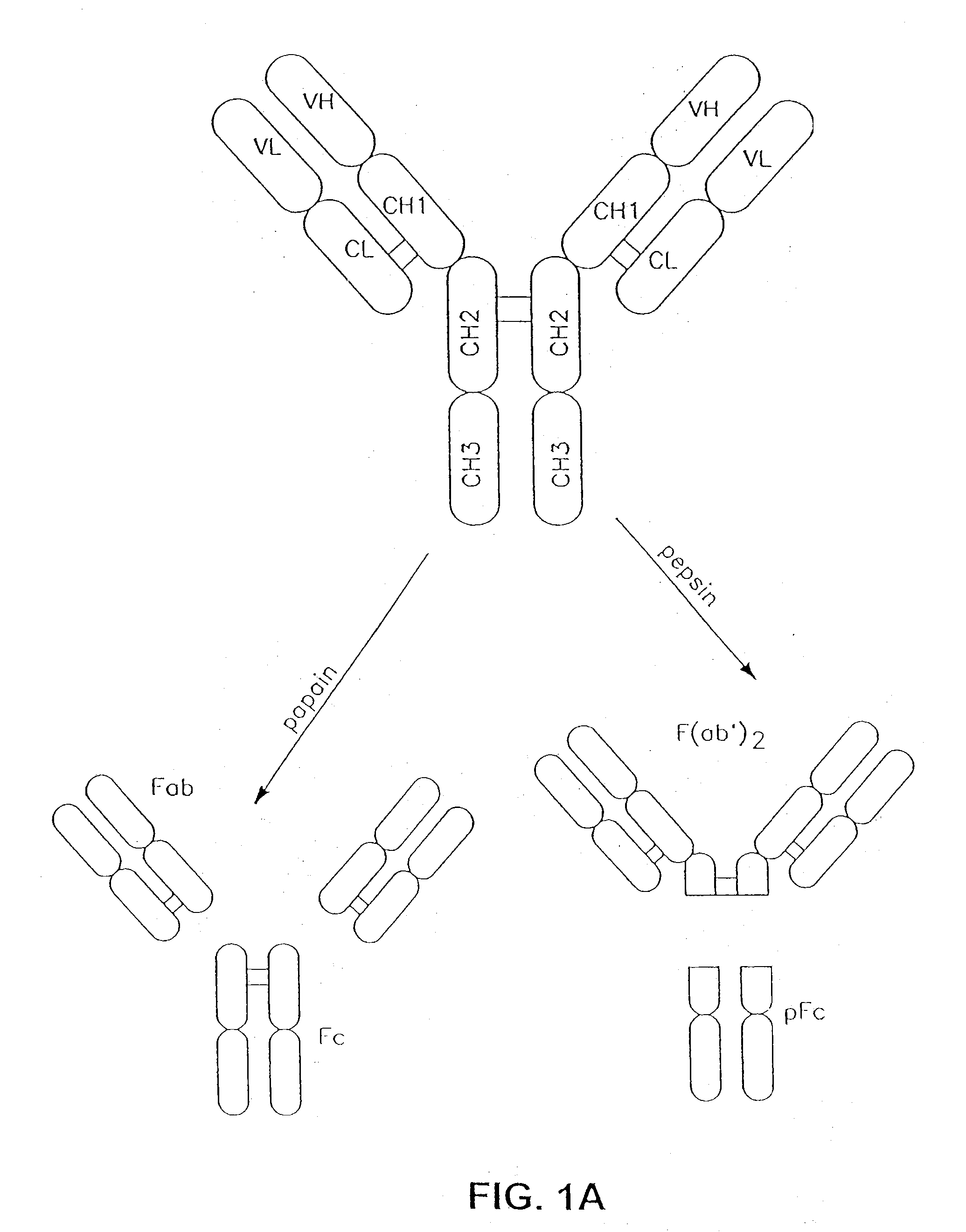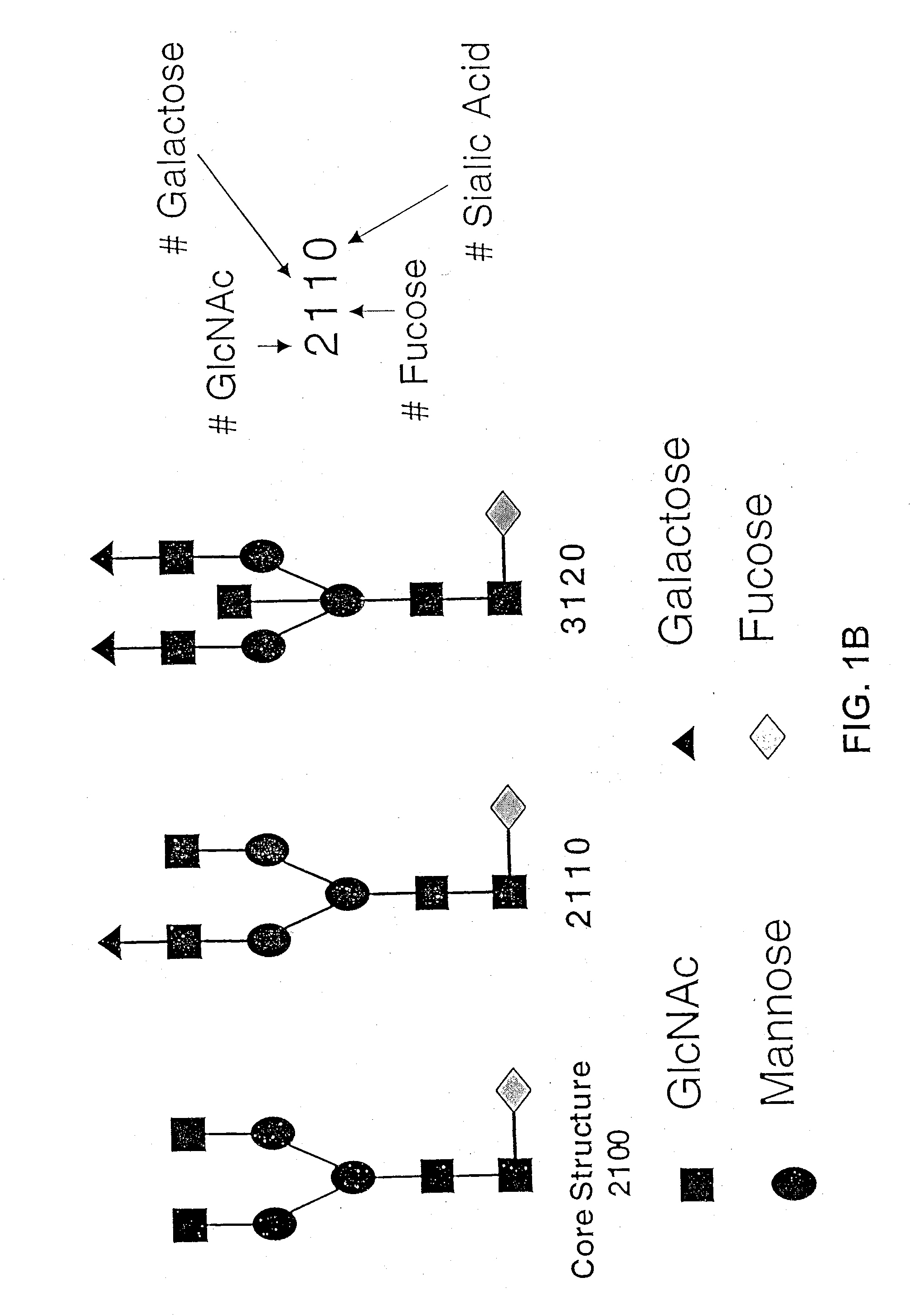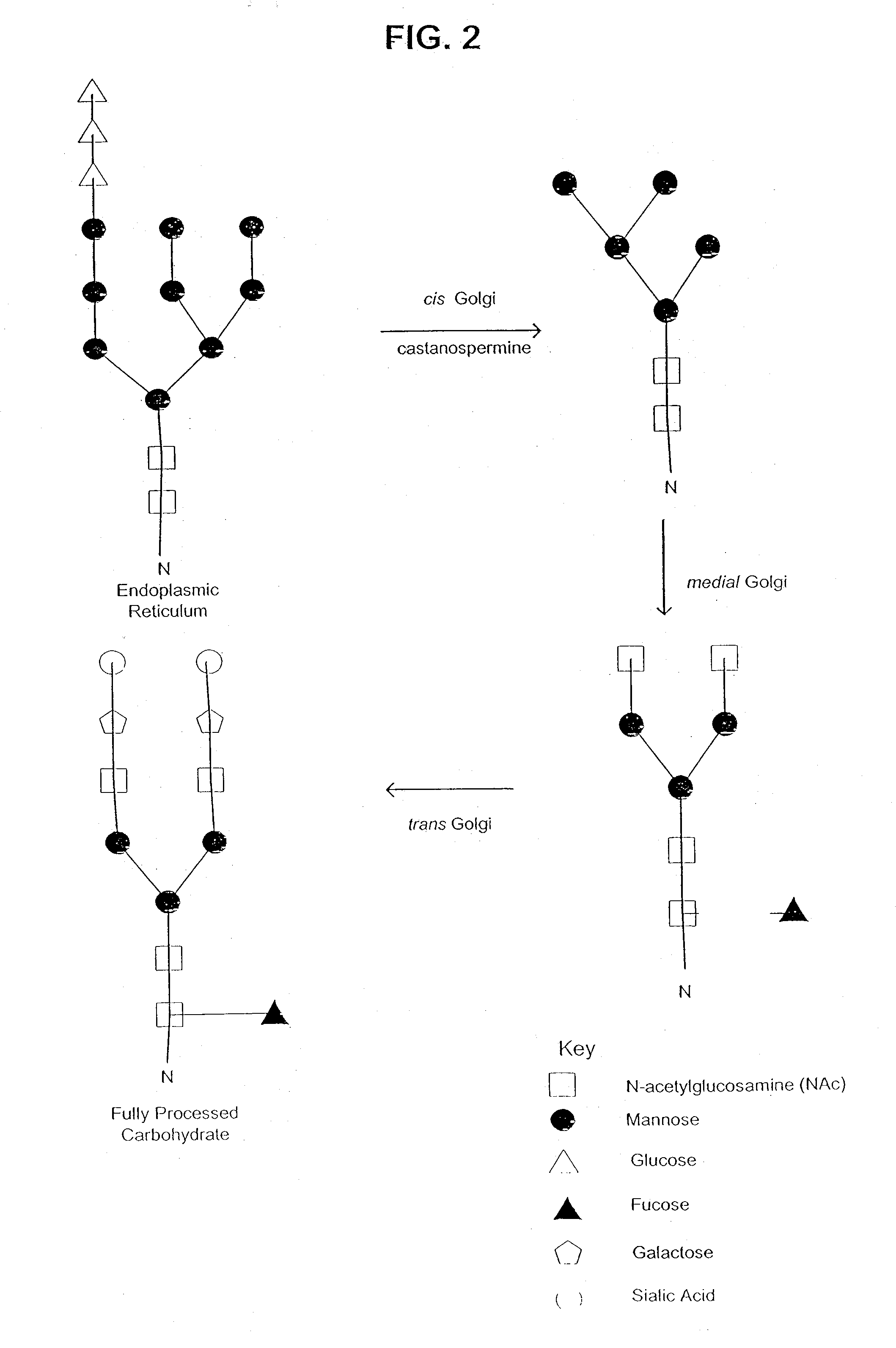Glycoprotein compositions
a glycoprotein and composition technology, applied in the field of glycoprotein compositions, can solve the problems of not removing foreign antigens and uneven distribution of variable domains of antibodies, and achieve the effect of improving adcc and binding
- Summary
- Abstract
- Description
- Claims
- Application Information
AI Technical Summary
Benefits of technology
Problems solved by technology
Method used
Image
Examples
example 1
Binding to Human FcR
[0474] cDNA Constructs for Stable Cell Lines: The heavy and light chains of the humanized anti-HER2 antibody Hu4D5 (Carter et al., Proc. Natl. Acad. Sci. USA, 89:4285 (1992)), the humanized, affinity matured anti-IgE antibody E27 (U.S. Pat. No. 6,172,213), and the chimeric anti-CD20 antibody C2B8 (U.S. Pat. No. 5,736,137) were subcloned into a previously described mammalian cell expression vector (Lucas et al. Nucl. Acid Res. 24, 1774-1779 (1996)). Puromycin is used as a selective marker in DHFR(+) cells, such as the Lec13 cells, and the DHFR site was retained for methotrexate amplification of the stable cell line.
[0475] Transfection and Culturing of Lec13 and Wild-type CHO Cells: The CHO cell line Pro-Lec13.6a (Lec13), was obtained from Professor Pamela Stanley of Albert Einstein College of Medicine of Yeshiva University. Parental lines are Pro- (proline auxotroph) and Gat- (glycine, adenosine, thymidine auxotroph). The CHO-DP12 cell line used for wild-type an...
example 2
C1q and FcRn Binding
[0494] Binding of C1q to antibodies is the first step in the classical pathway of complement activation (Makrides, S. C. Pharmacol. Rev. 50: 59-87 (1998)). The nature of the carbohydrate on the IgG influences the interaction with C1q (Wright et al. J. Immunol. 160: 3393-3402 (1998); Boyd et al. Molec. Immunol. 32: 1311-1318 (1995); and Tsuchiya et al. J. Rheumatol. 16: 285-290 (1989)). Hu4D5 binds human C1q less well than does RITUXAN®, an anti-CD20 mouse / human chimeric IgG1 (FIG. 15, 16) (Idusogie et al. J. Immunol. 164: 4178-4184 (2000)), and the lack of fucose did not affect the ability of Hu4D5 to interact with human C1q (FIG. 15, 16). Likewise, the presence or absence of fucose did not appear to affect IgG1 binding to FcRn.
example 3
Antibody Dependent Cellular Cytotoxicity (ADCC)
[0495] The affect of lack of fucose on ADCC was evaluated using Lec13-Hu4D5 IgG1 on the human breast cancer cell line SK-BR-3 (Hudziak et al. Mol. Cell Biol. 9: 1165-1172 (1989)). PBMCs from two FcγRIIIA(V158 / F158) donors and two FcγRIIIA(F158 / F158) donors were used as effector cells in a 30:1 effector:target ratio. For all donors the IgG1 without fucose exhibited significant improved in ADCC compared to IgG1 with fucose (FIGS. 17-20). Notably, for all donors the improvement in cytotoxicity was more apparent as the concentration of antibody was reduced. This may reflect the larger improvement in binding seen for the dimers compared to that for the hexamers, i.e. the fucose-minus variant may require fewer mAbs on the surface of the target cell in order to effect binding / activation of an effector cell.
[0496] Human monocytes express FcγRI, FcγRIIA, FcγRIIB and only a subpopulation expresses FcγRIIIA. Since the lack of fucose did not affe...
PUM
| Property | Measurement | Unit |
|---|---|---|
| Fraction | aaaaa | aaaaa |
| Fraction | aaaaa | aaaaa |
| Fraction | aaaaa | aaaaa |
Abstract
Description
Claims
Application Information
 Login to View More
Login to View More - R&D
- Intellectual Property
- Life Sciences
- Materials
- Tech Scout
- Unparalleled Data Quality
- Higher Quality Content
- 60% Fewer Hallucinations
Browse by: Latest US Patents, China's latest patents, Technical Efficacy Thesaurus, Application Domain, Technology Topic, Popular Technical Reports.
© 2025 PatSnap. All rights reserved.Legal|Privacy policy|Modern Slavery Act Transparency Statement|Sitemap|About US| Contact US: help@patsnap.com



